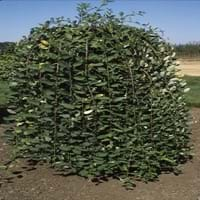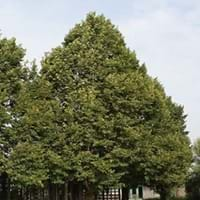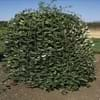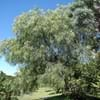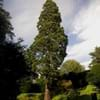Life Span
Perennial
Perennial
Origin
Europe, Western Asia
North America, Northeastern United States, Mid-Atlantic United States, Southeastern United States, North-Central United States, Central United States, South-Central United States, Texas, Canada
Types
Not Available
Not Available
Number of Varieties
Not Available
Habitat
Hedge, Woodland Garden Canopy
gardens, Hardwood forests, Hillside, Tropical rainforest, Woods
USDA Hardiness Zone
5-9
3-8
Sunset Zone
2a, 2b, 3a, 3b, 4, 5, 6, 7, 8, 9, 10, 11, 14, 15, 16, 17, 18, 19, 20, 21, 22, 23, 24
1a, 1b, 2a, 2b, 3a, 3b, 4, 5, 6, 7, 8, 9, 10, 11, 12, 13, 14, 15, 16, 17
Habit
Upright/Erect
Upright/Erect
Flower Color
Yellow, Silver
Light Yellow
Flower Color Modifier
Bicolor
Bicolor
Fruit Color
Green
Sandy Brown
Leaf Color in Spring
Dark Green
Green
Leaf Color in Summer
Dark Green
Dark Green
Leaf Color in Fall
Dark Green
Light Yellow, Brown, Ivory
Leaf Color in Winter
Not Available
Not Available
Leaf Shape
Oblong
Heart-shaped
Plant Season
Spring, Summer, Fall, Winter
Spring, Summer, Fall
Sunlight
Full Sun
Full Sun, Partial Sun
Type of Soil
Loam
Clay, Loam
The pH of Soil
Acidic, Neutral, Alkaline
Acidic, Neutral, Alkaline
Soil Drainage
Well drained
Well drained
Bloom Time
Early Spring
Early Summer
Tolerances
Not Available
Not Available
Where to Plant?
Ground
Ground
How to Plant?
Cuttings, Seedlings
Seedlings, Stem Planting
Plant Maintenance
Medium
Medium
Watering Requirements
Requires consistently moist soil
Requires watering in the growing season, Water Deeply, Water twice a day in the initial period
In Summer
Lots of watering
Lots of watering
In Spring
Moderate
Moderate
In Winter
Average Water
Average Water
Soil pH
Acidic, Neutral, Alkaline
Acidic, Neutral, Alkaline
Soil Type
Loam
Clay, Loam
Soil Drainage Capacity
Well drained
Well drained
Sun Exposure
Full Sun
Full Sun, Partial Sun
Pruning
Remove damaged leaves, Remove dead branches, Remove dead leaves
Remove damaged leaves, Remove dead branches, Remove dead leaves
Fertilizers
Use nitrogen rich soil
All-Purpose Liquid Fertilizer
Pests and Diseases
Blight, Canker, Leaf spot, Powdery mildew
Red blotch
Plant Tolerance
Drought
Drought
Flowers
Showy
Insignificant
Flower Petal Number
Not Available
Single
Foliage Texture
Medium
Coarse
Foliage Sheen
Matte
Matte
Attracts
Borers, Caterpillar, Lacebugs, Not Available
Not Available
Allergy
Severe allergen
Not Available
Aesthetic Uses
Bonsai, Showy Purposes
Showy Purposes
Beauty Benefits
Not Available
Not Available
Environmental Uses
Air purification
Air purification
Medicinal Uses
Anodyne, Aphrodisiac, Astringent, Febrifuge, Ophthalmic
Bladder Infection, Cold, Cough, Diuretic, Fever, Headache, High blood pressure, Used as a sedative
Part of Plant Used
Inner Bark, Leaves
Whole plant
Other Uses
Basketary, Used as a cereal in making bread, porridge, used for making charcoal, Used to make leather
Beneficial species for attracting pollinators, Used as Ornamental plant, Used for its medicinal properties, Used in making musical instruments
Used As Indoor Plant
Yes
No
Used As Outdoor Plant
Yes
Yes
Garden Design
Cutflower, Feature Plant, Foundation, Mixed Border
Shade Trees, Street Trees
Botanical Name
SALIX caprea 'Kilmarnock'
TILIA americana
Common Name
Pussy Willow, Weeping Pussy Willow
American Basswood
In Hindi
Weeping Pussy Willow
अमेरिकी Basswood
In German
Weinend Salweide
amerikanischen Basswood
In French
Weeping Willow Pussy
tilleul d'Amérique
In Spanish
Llorando sauce de gatito
tilo americano
In Greek
Κλάμα Μουνί Willow
Αμερικανός Basswood
In Portuguese
Chorando Borrazeira
Basswood americano
In Polish
Płacząca Pussy Willow
Amerykańska Lipa
In Latin
Pussy flentes salices
American Basswood
Phylum
Magnoliophyta
Anthophyta
Class
Magnoliopsida
Magnoliopsida
Family
Salicaceae
Tiliaceae
Clade
Angiosperms, Eudicots, Rosids
Angiosperms, Eudicots, Rosids
Tribe
Not Available
Tileae
Subfamily
Not Available
Tilioideae
Number of Species
Not Available
Season and Care of Weeping Pussy Willow and American Basswood
Season and care of Weeping Pussy Willow and American Basswood is important to know. While considering everything about Weeping Pussy Willow and American Basswood Care, growing season is an essential factor. Weeping Pussy Willow season is Spring, Summer, Fall and Winter and American Basswood season is Spring, Summer, Fall and Winter. The type of soil for Weeping Pussy Willow is Loam and for American Basswood is Clay, Loam while the PH of soil for Weeping Pussy Willow is Acidic, Neutral, Alkaline and for American Basswood is Acidic, Neutral, Alkaline.
Weeping Pussy Willow and American Basswood Physical Information
Weeping Pussy Willow and American Basswood physical information is very important for comparison. Weeping Pussy Willow height is 180.00 cm and width 180.00 cm whereas American Basswood height is 1,520.00 cm and width 760.00 cm. The color specification of Weeping Pussy Willow and American Basswood are as follows:
Weeping Pussy Willow flower color: Yellow and Silver
Weeping Pussy Willow leaf color: Dark Green
American Basswood flower color: Light Yellow
- American Basswood leaf color: Green
Care of Weeping Pussy Willow and American Basswood
Care of Weeping Pussy Willow and American Basswood include pruning, fertilizers, watering etc. Weeping Pussy Willow pruning is done Remove damaged leaves, Remove dead branches and Remove dead leaves and American Basswood pruning is done Remove damaged leaves, Remove dead branches and Remove dead leaves. In summer Weeping Pussy Willow needs Lots of watering and in winter, it needs Average Water. Whereas, in summer American Basswood needs Lots of watering and in winter, it needs Average Water.
